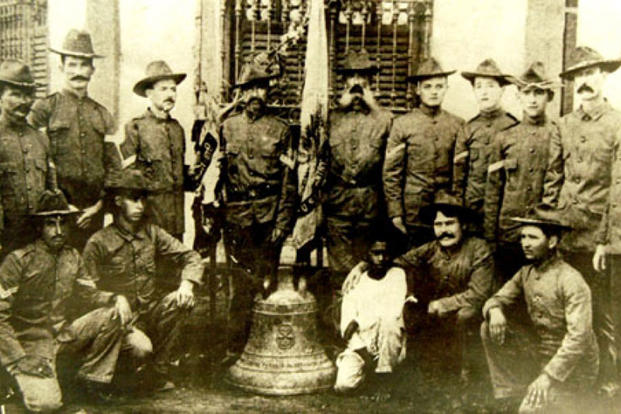Defense Secretary Jim Mattis acted over the weekend to return to the Philippines church bells that allegedly signaled an attack on U.S. troops in 1901.
Following Mattis' notification to Congress of intent to return the bells, the U.S. Embassy in Manila said in a statement Saturday, "No specific date has been identified for the return of the bells. We've received assurances that the bells will be returned to the Catholic Church and treated with the respect and honor they deserve."
Since taking office, Filipino President Rodrigo Duterte has demanded the return of the "Balangiga Bells," which were taken as trophies by U.S. troops, but are seen by many in the Philippines as symbols of American war crimes in the Philippine-American War.
Last year, U.S. Ambassador Sung Kim said returning the three bells, taken from the tower of the Roman Catholic church in Balangiga, in eastern Samar, was "the right thing to do."
However, also last year, Reps. James McGovern, D-Massachusetts, and Randy Hultgren, R-Illinois, said the bells should not be returned until Duterte takes "clear, measurable efforts to stop extrajudicial killings" in the war on drugs in the islands.
In a report last month, Amnesty International charged that Duterte's efforts to enhance his "strongman image" have "made the country a more dangerous place, particularly for the poorest Filipinos."
"Instead of combating a difficult social problem, his 'war on drugs' has caused untold damage and misery," the Amnesty report said.
At the Malacanang Palace, the presidential residence in Manila, spokesman Henry Rocque said Sunday, "We welcome this development as we look forward to continue working with the United States government in paving the way for the return of the bells to the Philippines."
Two of the bells are on display at F.E. Warren Air Force Base near Cheyenne, Wyoming. The third is with the U.S. Army's 9th Infantry Regiment in South Korea.
On Sept. 28, 1901, Company C of the 9th Infantry in Balangiga was attacked by Filipino guerrillas, with the signal to move against the Americans allegedly being given by the ringing of the bells. More than 40 U.S. troops were killed.
In response, U.S. Brig. Gen. Jacob H. Smith ordered that Balangiga and Samar be turned into a "howling wilderness" and allegedly said that any Filipino male above 10 years of age capable of bearing arms should be shot.
Smith later faced a court-martial. He was found guilty, admonished and forced to retire. One of his subordinates, Maj. Littleton Waller, also faced a court-martial on charges of ordering the execution of 12 Filipino guides. He was found not guilty.
According to the Defense Department, nearly 4,200 U.S. troops died, mostly from disease, in the 1899-1902 Philippine-American War and the guerrilla resistance to U.S. colonial rule that continued into 1913. The Philippines achieved independence in 1946.
-- Richard Sisk can be reached at Richard.Sisk@Military.com.










